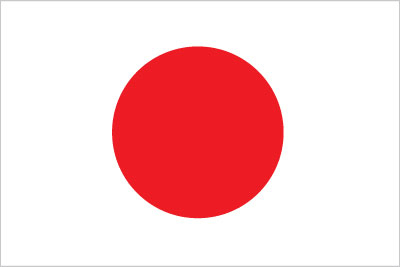
In the years following World War II, government-industry cooperation, a strong work ethic, mastery of high technology, and a comparatively small defense allocation (1% of GDP) helped Japan develop a technologically advanced economy. Two notable characteristics of the post-war economy were the close interlocking structures of manufacturers, suppliers, and distributors, known as keiretsu, and the guarantee of lifetime employment for a substantial portion of the urban labor force. Both features are now eroding under the dual pressures of global competition and domestic demographic change. Japan's industrial sector is heavily dependent on imported raw materials and fuels. A small agricultural sector is highly subsidized and protected, with crop yields among the highest in the world. While self-sufficient in rice production, Japan imports about 60% of its food on a caloric basis. For three decades, overall real economic growth had been spectacular - a 10% average in the 1960s, a 5% average in the 1970s, and a 4% average in the 1980s. Growth slowed markedly in the 1990s, averaging just 1.7%, largely because of the after effects of inefficient investment and an asset price bubble in the late 1980s that required a protracted period of time for firms to reduce excess debt, capital, and labor. Modest economic growth continued after 2000, but the economy has fallen into recession three times since 2008. A sharp downturn in business investment and global demand for Japan's exports in late 2008 pushed Japan into recession. Government stimulus spending helped the economy recover in late 2009 and 2010, but the economy contracted again in 2011 as the massive 9.0 magnitude earthquake and the ensuing tsunami in March disrupted manufacturing. The economy has largely recovered in the two years since the disaster, but reconstruction in the Tohoku region has been uneven. Prime Minister Shinzo ABE has declared the economy his government's top priority; he has overturned his predecessor's plan to permanently close nuclear power plants and is pursuing an economic revitalization agenda of fiscal stimulus, monetary easing, and structural reform. Japan joined the Trans Pacific Partnership negotiations in 2013, a pact that would open Japan's economy to increased foreign competition and create new export opportunities for Japanese businesses. Measured on a purchasing power parity (PPP) basis that adjusts for price differences, Japan in 2013 stood as the fourth-largest economy in the world after second-place China, which surpassed Japan in 2001, and third-place India, which edged out Japan in 2012. The new government will continue a longstanding debate on restructuring the economy and reining in Japan's huge government debt, which is exceeding 230% of GDP. To help raise government revenue and reduce public debt, Japan decided in 2013 to gradually increase the consumption tax to a total of 10% by the year 2015. Japan is making progress on ending deflation due to a weaker yen and higher energy costs, but reliance on exports to drive growth and an aging, shrinking population pose other major long-term challenges for the economy.
$4.729 trillion (2013 est.)
country comparison to the world: 5
$4.638 trillion (2012 est.)
$4.549 trillion (2011 est.)
note: data are in 2013 US dollars
2% (2013 est.)
country comparison to the world: 142
2% (2012 est.)
-0.6% (2011 est.)
$37,100 (2013 est.)
country comparison to the world: 36
$36,300 (2012 est.)
$35,600 (2011 est.)
agriculture: 1.1%
industry: 25.6%
services: 73.2% (2013 est.)
16% (2010)
0.2% (2013 est.)
country comparison to the world: 13
0% (2012 est.)
65.62 million (2013 est.)
country comparison to the world: 9
agriculture: 3.9%
industry: 26.2%
services: 69.8% (2010 est.)
4.1% (2013 est.)
country comparison to the world: 34 4.4% (2012 est.)
among world's largest and most technologically advanced producers of motor vehicles, electronic equipment, machine tools, steel and nonferrous metals, ships, chemicals, textiles, processed foods
1% (2013 est.)
country comparison to the world: 145